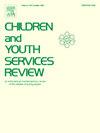More money, more questions: How caregivers spent the expanded child tax credit
IF 2.4
2区 社会学
Q1 FAMILY STUDIES
引用次数: 0
Abstract
In 2021, the federal government passed a one-year expanded child tax credit (ECTC), which increased the credit’s amount, made it fully refundable, and issued half of the credit as monthly payments to households with children. This policy, with its wide income-eligibility, can be used to better understand how families use cash benefits, as well as how those uses and related decision-making processes vary by financial context. This explanatory sequential mixed methods study uses survey and interview data to examine how caregivers of varying income levels living in Maryland used the funds and the factors shaping those decisions. We surveyed 306 caregivers between November 2022 and February 2023 about their receipt and use of the child tax credit. We then used stratified purposeful sampling to recruit 22 caregivers from three income groups (<185 %, 185 %-300 %, and 300 %+ of the federal poverty line) for interviews between March and June 2023. We used descriptive statistics, chi-squared tests, and thematic content analysis to identify how caregivers used the funds, explore variation by income, and described factors shaping ECTC use. Caregivers often reported using the funds for necessities like food and utilities; however, many caregivers—particularly those with higher incomes— also used the funds for debt payments and savings and investments. Financial context (e.g., job and income loss) played a paramount role in both constraining and explaining how caregivers used the funds; however, other factors like family structure, benefit timing, payment structure, and the ECTC’s framing as a child benefit were also described as factors that shaped caregivers’ decisions. The household and policy level factors identified in this study reveal important insights into how the structure and implementation of policies like the ECTC might shape how they are used, as well as how the ECTC’s wide income-eligibility might have impacted health equity across financial contexts.
求助全文
约1分钟内获得全文
求助全文
来源期刊

Children and Youth Services Review
Multiple-
CiteScore
6.30
自引率
6.10%
发文量
303
期刊介绍:
Children and Youth Services Review is an interdisciplinary forum for critical scholarship regarding service programs for children and youth. The journal will publish full-length articles, current research and policy notes, and book reviews.
 求助内容:
求助内容: 应助结果提醒方式:
应助结果提醒方式:


